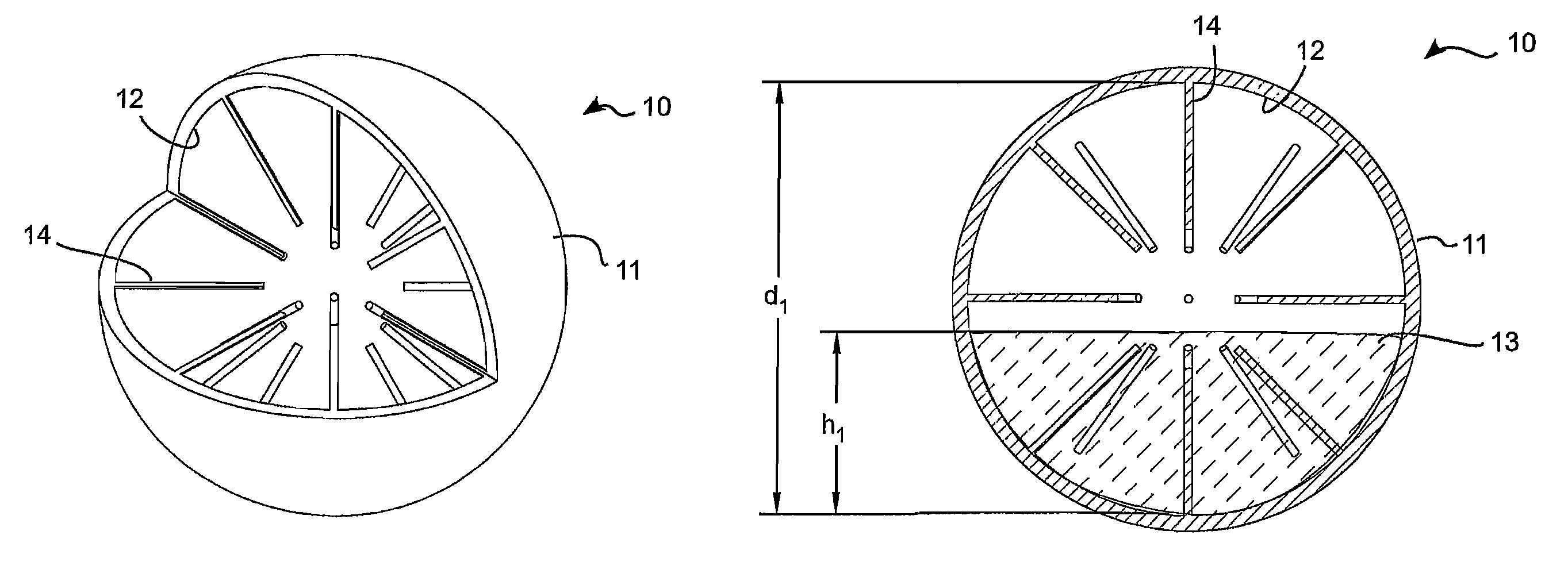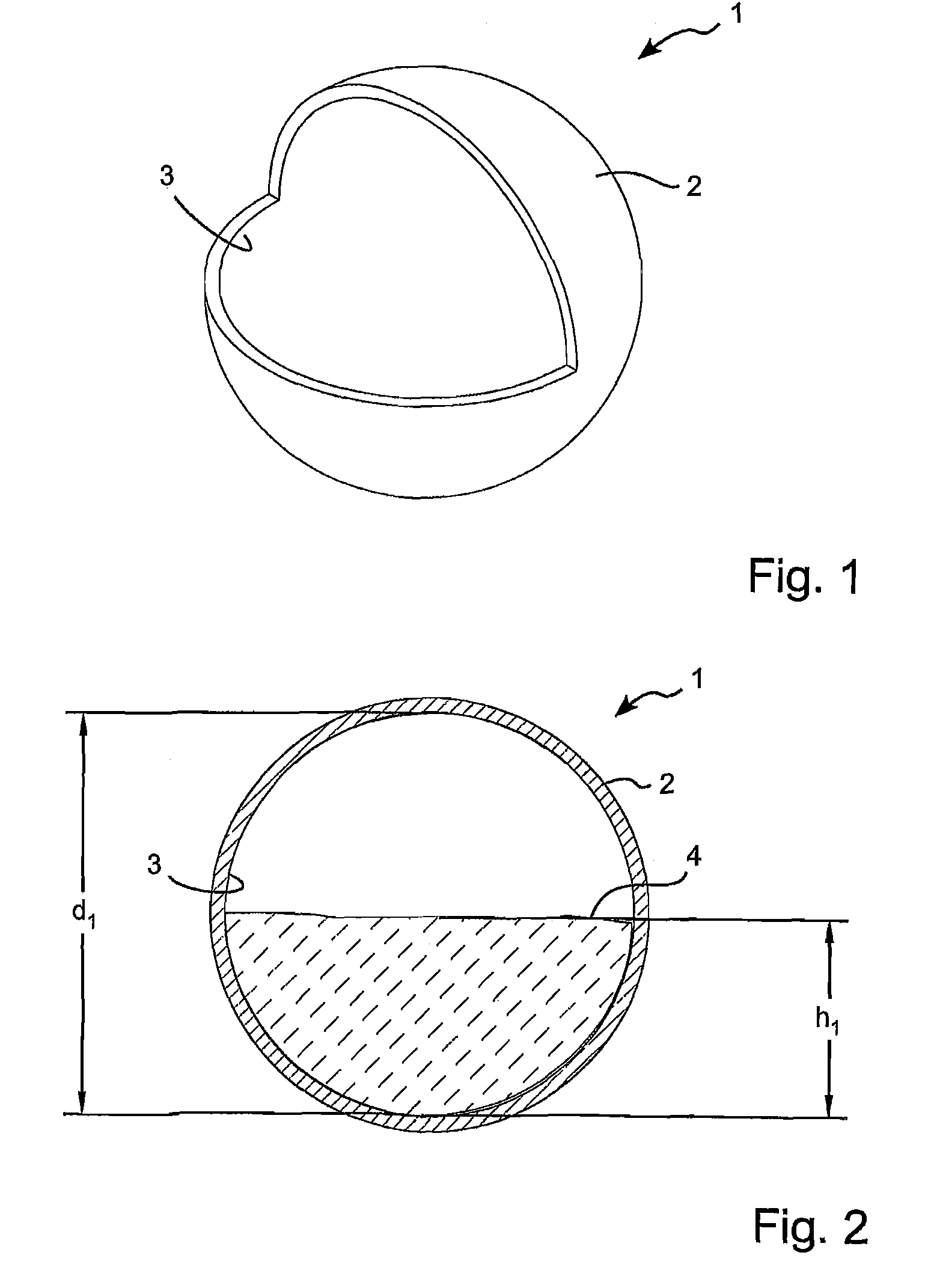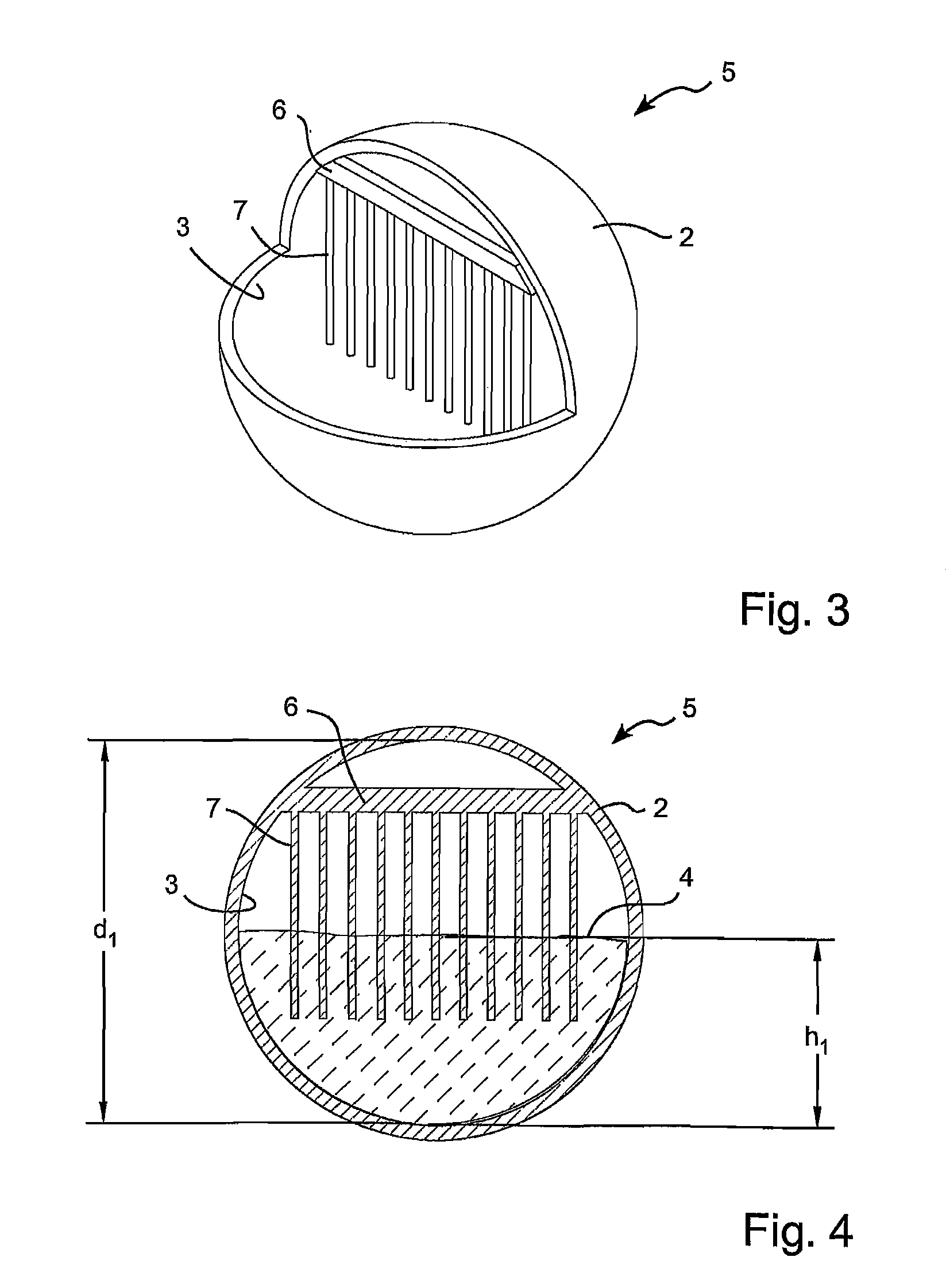Tuned liquid damper
a liquid damper and tuning technology, applied in vibration dampers, building components, sustainable buildings, etc., can solve the problems of large angular changes, and rectangular and cylindrical tuned liquid dampers that do not work well for rotational vibration. , to achieve the effect of improving performance to mass ratio, large angular changes, and high participation factor
- Summary
- Abstract
- Description
- Claims
- Application Information
AI Technical Summary
Benefits of technology
Problems solved by technology
Method used
Image
Examples
embodiment 1
[0040]FIGS. 1 and 2 show a first and simple embodiment 1 of a spherical tuned liquid damper (STLD) according to the invention. The STLD 1 comprises a spherical housing 2 and a hollow inner cavity 3 inside the housing 2. The inner surface of the hollow inner cavity 3 is spherical with a diameter of “d1”. The hollow inner cavity 3 is partially filled with a fluid 4. The amount of fluid 4 in the hollow inner cavity 3 is defined by the height “h1” of the liquid. When the STLD 1 is displaced, the liquid will slosh back and forth within the inner cavity 3. However, it should be noted that from experimental tests, it can be seen that at around the dominant frequency of the STLD, the motion of the fluid in the STLD becomes circular. The sloshing effect of the fluid therefore reduces around the dominant frequency of the STLD.
[0041]The natural frequency of the STLD is a function of the diameter d1 of the inner cavity 3 and the height h1 of the fluid. It is to be noted that while a few authors...
embodiment 40
[0066]Furthermore, in the current embodiment 40, the inner element 44 has a spherical inner cavity 46 of diameter d2 partially filed with a second fluid 47 having a height h2. The natural frequency of the first fluid 43 and the second fluid 47 can be chosen different from each other. In one example, the natural frequency of the first fluid 43 could be chosen to match the frequency of the first mode of the structure to be dampened and the natural frequency of the second fluid 47 could be chosen to match the frequency of the second mode of the structure to be dampened. In this way, the frequencies of both the first and second modes of the structure can be dampened.
[0067]It is to be noted, that in order to achieve the higher mass participation of the sphere in sphere embodiment, it is not necessary for the inner element to have an inner cavity filed with a second fluid. The inner element could be solid or filled with air. In this case, the STLD will have only a single natural frequency...
embodiment 60
[0070]The embodiment 60 shown in FIGS. 14-16, is an example of a housing 61 in the form of a partial sphere where another smaller partial sphere 62 is arranged inside the first partial sphere. The inner partial sphere 62 is held in place by support elements 63 arranged between the inner partial sphere 62 and the outer partial sphere 61. This arrangement results in a gap 64 between the two partial spheres 61,62. The effect of this is to further increase the mass participation of the fluid 65 arranged in the gap. This embodiment is suitable for applications where a low frequency is desired.
PUM
 Login to View More
Login to View More Abstract
Description
Claims
Application Information
 Login to View More
Login to View More - R&D
- Intellectual Property
- Life Sciences
- Materials
- Tech Scout
- Unparalleled Data Quality
- Higher Quality Content
- 60% Fewer Hallucinations
Browse by: Latest US Patents, China's latest patents, Technical Efficacy Thesaurus, Application Domain, Technology Topic, Popular Technical Reports.
© 2025 PatSnap. All rights reserved.Legal|Privacy policy|Modern Slavery Act Transparency Statement|Sitemap|About US| Contact US: help@patsnap.com



